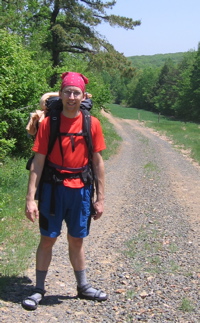Research and other academic activities
Active Galaxies
I am currently looking into the multi-wavelength properties of active galactic nuclei (AGN). As far as astronomers can tell, all galaxies have a huge black hole in their centers. Some of these monsters are actively accreting material, and producing a lot of light (from the high temperatures and powerful magnetic fields around them). Some are not; the black hole in the center of our galaxy is currently inactive. What determines when and how these so-called active galaxies turn on and off?
I initially gave a summary talk about where I was intending to go with this work, but it morphed (as such work often does) into something slightly different. My orals exam was on the preliminary results from this work. I am trying to measure the efficiency of accretion onto blackholes in nearby galaxies that are only slightly active. There are a lot of them, but their nuclear activity is very weak, so measuring it is a challenge. I also had to submit a paper on the results of my work, which is what the talk is based on. My current problems involve removing the stellar contamination from the optical and UV light and including infrared observations.
My first paper was accepted into the January 2008 issue of the Astronomical Journal! Source Matching in the SDSS and RASS: which Galaxies are Really X-Ray Sources?" I have given two posters on related work, at the Seattle 2007 and Austin 2008 AAS meetings, respectively. Both posters seemed to be well received, as all the smaller copies I had made were gone by the end of each meeting.
As part of the followup to this work, I presented a poster at the 2008 SDSS "Asteroids to Cosmology" meeting in Chicago. It was great to see the range of subjects that the SDSS has touched on. From Astroids to Cosmology indeed!
For a change of pace, I gave a 5 minute talk at the 2008 AAS meeting (original keynote, exported pdf). The talk went well, though I took nearly 7 minutes, instead of my allotted 5 (most talks tend to go slightly long, but I'm still disappointed in myself: I'd goten it down to 4:30 during practice!). There were a few questions, and some people who were interested in the method. I also made use of this talk for the first Journal Club of the year at Drexel (original keynote, exported pdf). This one, unfortunately, went very long, but people seemed to be interested in the "asking questions" part of it (shamelessly stolen from Ed and Gina's teaching workshop, because I needed a way to practice what they'd preached!), and I hope it becomes a bit of a tradition. Certainly seemed to keep more students paying attention.
On a non-X-ray subject, I presented a poster on the only-vaguely analyzed data from our Kitt Peak observing run at the Monster's Fiery Breath conference in Madison, WI. Interacting Void Galaxies in the SDSS. I love Madison.
Classes and Journal Clubs
I've given quite a few talks at the astrophysics journal club. I did the first one in OpenOffice Impress, about the black hole at the center of our galaxy. The other two, on Measuring gas in galaxies and Cosmological parameters were done in lyx, and are in pdf format.
Though not directly research related, I think a couple of the summary papers I've done for my classes are particularly interesting. I worked with Hangbin Lin in Quantum III on the Zero-Point Energy. I also did some digging on Renormalization Group Theory for Statistical Mechanics II.
Though I'm co-president of the Physics Graduate Student Association, that doesn't obviate me from giving talks. My first talk was a whirlwind tour of the Cassini/Huygens mission to Saturn, but it didn't have slides, just a bunch of pictures in iPhoto. My second talk discussed why I personally am so afraid of global warming (original Keynote, exported pdf). It certainly created quite a bit of discussion, but I think some people were convinced of the danger.
